See our latest update: The Best Phones for Every Price Range
There are many factors to consider when buying a new phone, but for most people the crucial element is price. Are you willing to shell out over a grand on the latest and greatest phone, or will a $350 mid-range champion suffice? We've also picked our favorite foldables, in case you've gotten bored with traditional, candy bar phones.
To help you navigate the multitude of phone options and help in your decision, we've collected and organized our top picks into 5 categories, based on features, value and price.
Best for Most People
Apple iPhone 12

Apple's approach to reducing prices for older models to go alongside its latest iPhone models means the iPhone 12 can now be had for $699. It replaces our previous recommendation, the iPhone 11 which is now more reasonably priced at $499.
You can't go wrong with either of these if you want the iPhone experience without paying top dollar, but we think the iPhone 12 is a better purchase for most people. It remains a relatively recent release and the value it delivers in the long term. Expectedly, this model's performance will feel similar to the iPhone 11 in daily use, but it adds 5G and packs several quality-of-life improvements in what's otherwise an iterative update for the most part.
One of these improvements is the OLED display, which Apple added to the standard iPhone model with the 12 series. Even though it's stuck at 60Hz, like on the latest $799 iPhone 13 (frustratingly), the viewing experience certainly benefits from deeper blacks and richer colors than the iPhone 11's lower-res LCD.
The iPhone 12's dual camera system and selfie shooter is also more capable during nighttime photography, though don't expect dramatic improvements over the iPhone 11 in daytime shots. Apple's addition of Dolby Vision HDR for the iPhone 12 also means improved video quality over its predecessor.

There are design and functional improvements as well. The flat edges of the iPhone 12 are a nod to the classic iPhone 4, and there's a whole new ecosystem of wireless accessories that snap on the back with the addition of MagSafe. This not only helps with charging, but also allows easy attachment of car vent mounts, power banks, and wallets.
Apple's iOS and industry-leading software support will keep the iPhone 12 usable and sellable for far longer than its Android rivals, an advantage that the cheaper, older iPhone 11 enjoys, too. The latter is a better option for iPhone buyers on a tighter budget, hence its inclusion in our value category.
The Android Alternative:
Samsung Galaxy S21
The Samsung Galaxy series has come a long way and continues to be the definitive Android flagship for users who dislike being locked into Apple's walled ecosystem. Like its Apple rival, the Galaxy S line has become the usual case of iterative upgrades, though Samsung has managed to close the gap with Apple - somewhat - in terms of software support after its commitment to a 4-year security update policy to go alongside 3 years of OS upgrades.
The first of those upgrades arrived recently for the S21 series with Samsung's One UI 4, packing Android 12's privacy enhancements, design tweaks and deeper customization.
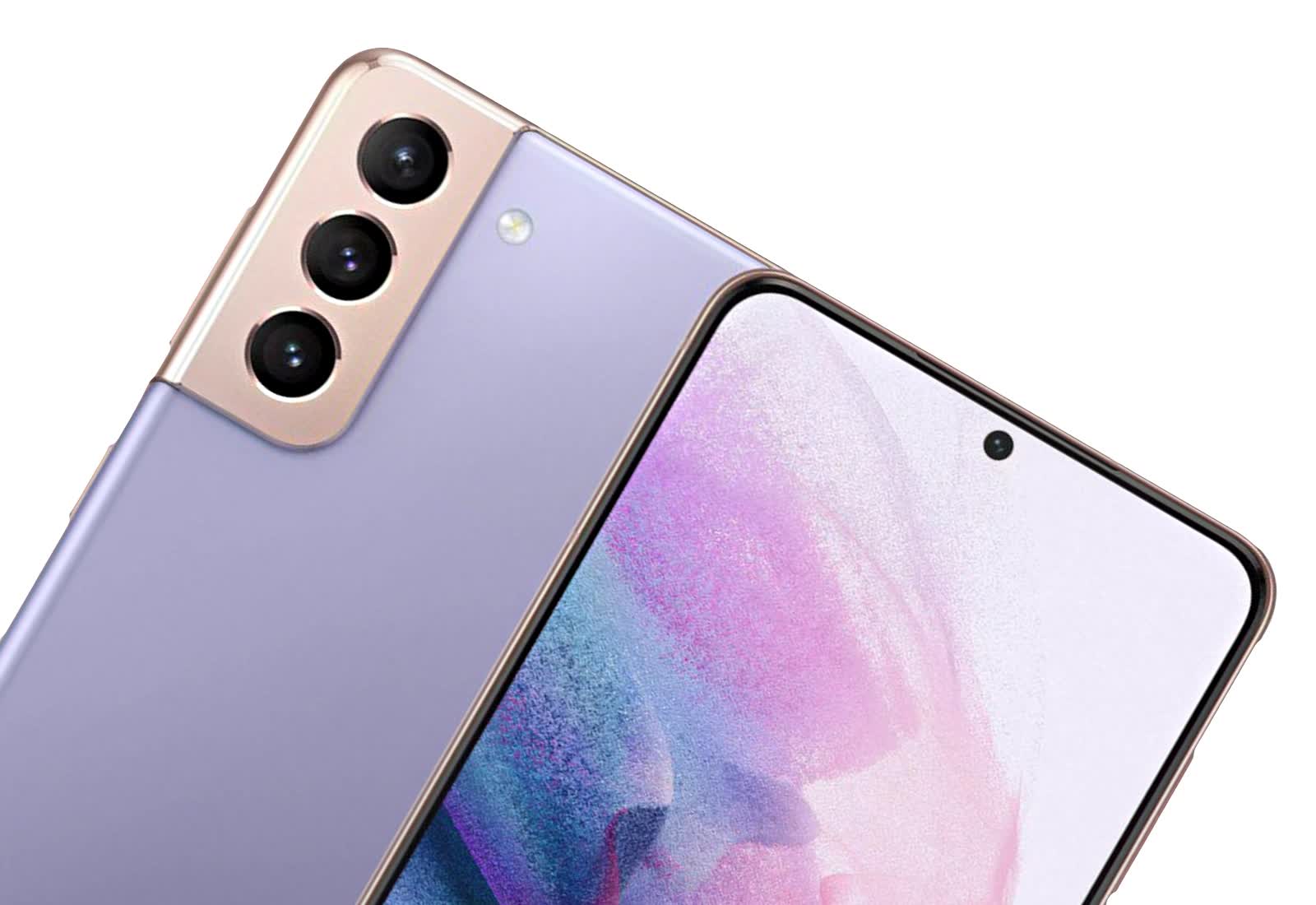
The adaptive UI elements will now pop up on that vibrant 6.2-inch AMOLED display, which refreshes dynamically between 120Hz - 48Hz to balance performance and efficiency. Samsung opted for a slightly lower-res 1080p panel (vs. QHD on the Galaxy S20), but the switch to a flat design means more space around the edges for a secure grip and better durability over curved panels.
Although some may not like the Galaxy S21's plastic back (especially on an $800 phone), it has a smartly designed camera module that gives it a distinctive look. Performance of the triple-camera array is par for the course on a 2021 flagship, and the same can be expected in terms of battery life from its 4,000mAh unit, which will last you about a day. Just make sure to have a reasonably fast charger (ideally 25W) lying around, since Samsung started following Apple's lead with the S21 and no longer provides one in the box.
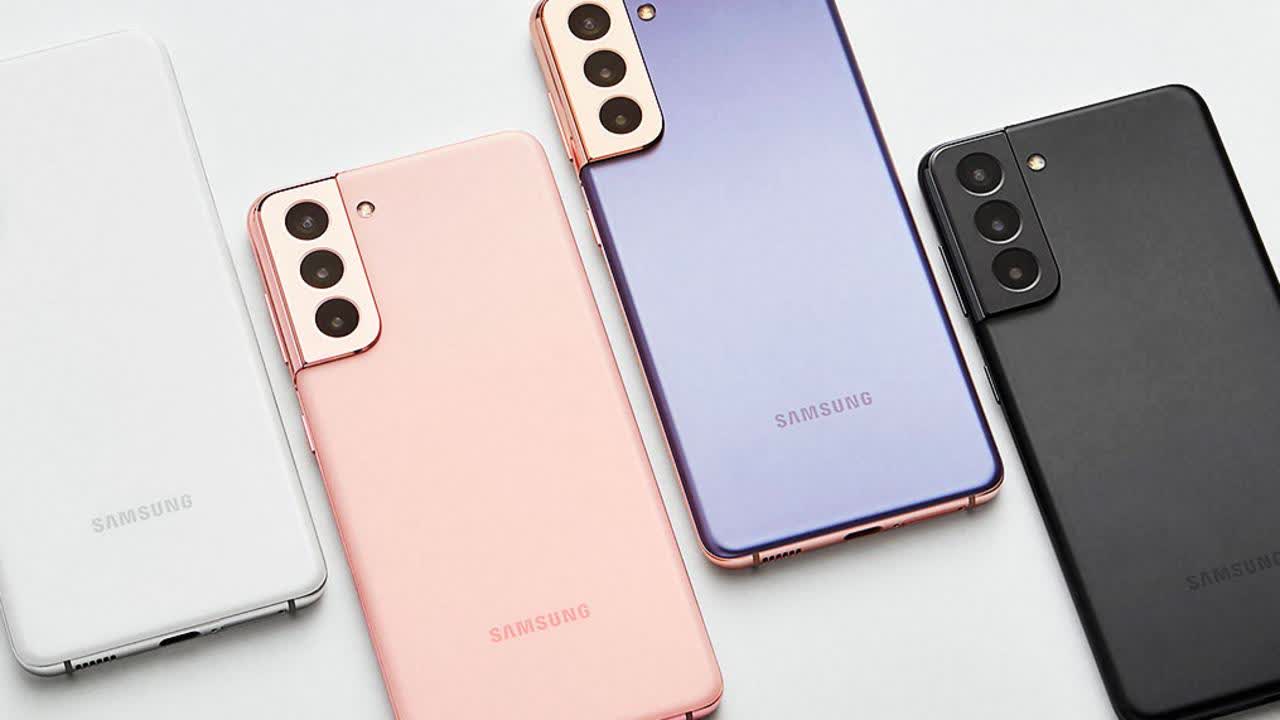
There's also no microSD expansion, but an optional 256GB variant should address most people's storage concerns. There's little else to complain about, given the snappy performance from the Snapdragon 888 5G SoC, Samsung's DeX support, wireless (and reverse) charging, and IP68 dust/water resistance.
The Galaxy S21's successor is likely just a couple of months away, so it might be worth waiting to see what the S22 has to offer. However, those after a new Android phone during the winters/holidays shopping season or looking to trade in their device should definitely have the S21 on top of their list.
For stock Android enthusiasts:
Google Pixel 6
The highly-anticipated Pixel 6 line has launched to a promising start, bringing the best of Google's software and hardware in a compelling package. Out of the standard Pixel 6 and 6 Pro, the former is arguably the better buy for most people due to its tempting $599 starting price.
The phone's two-tone look can divide opinion, but it's a welcome change over the increasingly samey, bland designs that we usually see on other phones and the understated aesthetic of the Pixel 6's predecessors.

The rear horizontal black bar houses Google's best camera system yet, and saves you quite a few bucks over the 6 Pro and its telephoto lens if the 50MP main camera is all you're after. On top of improving day and night mode photography, Google has also added useful touches like the Magic Eraser tool, Face Unblur, and better skin tone recognition to make the most out of the camera experience.
The Pixel line is also the only place to get the truest version of Android, which some users prefer over highly customized and oftentimes bloated OEM skins. The Pixel 6 packs all the design, performance, features and privacy enhancements that come with Android 12 and makes good use of the custom Tensor chip to power AI features to enable improved voice recognition, real-time translation and automated message transcription.
The phone's 6.4-inch 90Hz 1080p AMOLED display is perfectly adequate, though there are a few hardware and software quirks that some early buyers have reported. These include sluggish fingerprint scanners, accidental calls and flickering displays. Google has acknowledged and already rolled out fixes for two of these issues, while glitchy screens will be addressed in an upcoming OTA update.
There's also been some controversy over the Pixel 6's slow charging speeds, given that Google recommends a 30W USB-C charger, which mislead some users into thinking the phone also charges at 30W. That's not the case, as Google has since clarified that the Pixel 6 draws a peak of 21W (23W for the 6 Pro) and may also pause charging above 80 percent to improve battery longevity. Adaptive/optimized charging mechanisms have existed for a couple of years now, and what's important to note here is that if you don't plug the Pixel 6 overnight, its 4,614mAh battery will feel noticeably slower to charge (50 percent in 30 mins, 80 percent in 1 hour).
The Pixel 6 also launches alongside Google's Pixel Pass subscription, which starts at $45 and bundles core Google services like ad-free YouTube Premium and Music, 200GB Google One storage, Play Pass, Preferred Care coverage and a new Pixel phone every two years. Unfortunately, availability of Google Pixels has always been limited to a few markets, and the Pixel 6 is no different in this regard. The phone is currently being sold through official channels only in 9 countries, with pre-order bonuses for customers in the US, France, Germany, UK and Ireland.
Best Value Phones
Xiaomi Redmi Note 10 Pro

Taking a page out of Samsung's book, Xiaomi has a sea of devices targeting nearly all price points, but it's the company's value and budget-oriented phones that outdo the competition and offer the best value for money. The Redmi Note 10 Pro is one such example, delivering quite a compelling package in the mid-tier category in terms of performance, specs and design.
For $340, you get a huge 6.67-inch 1080p 120Hz AMOLED display with HDR10 support and a beefy quad camera system that packs a 108MP main sensor. There's also a chunky 5,020mAh battery that'll get you through multiple days of light and moderate use.
Under the hood is Qualcomm's speedy mid-tier Snapdragon 732G SoC paired with 6GB/64GB memory and storage in the base model (top variant ups it to 8GB/128GB). There's also a dedicated slot for microSD expansion, IP53 protection against dust/water splashes, and useful connectivity features like a 3.5mm jack and an infrared port for controlling appliances.
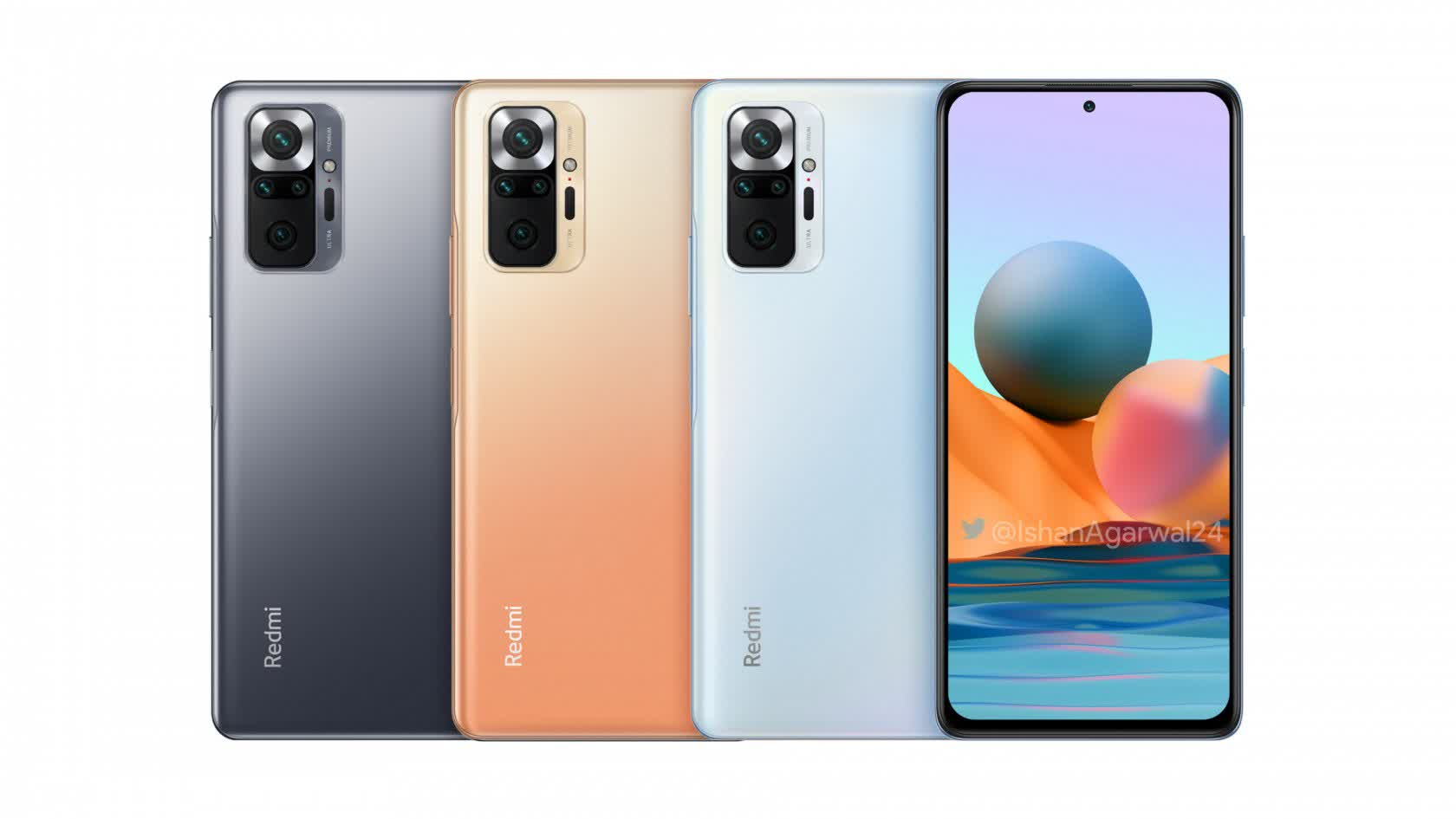
In terms of software, Xiaomi's MIUI 12 skin sits on top of Android 11, and has a light sprinkling of ads and bloatware out of the box. It's a small, avoidable annoyance, as the software allows users to change default settings to disable ads and promoted apps.
The Redmi Note 10 Pro is an attractively priced mid-ranger that punches above its weight and delivers one of the biggest bangs for your buck. Although easy on the pocket, the phone's rather large dimensions and weight approaching 200g might be too heavy for some, making the cumbersome form factor this Xiaomi's only major weakness.
Stock Android at a great price:
Google Pixel 5a 5G
Fans of stock Android know the best experience is available on the Google Pixel series. The Pixel 5a 5G remains a great mid-tier proposition with a cool $399 price tag. It's not a spec king, nor does it have Google's custom Tensor chip and accompanying features of the newer Pixels, but the 5a 5G was among the first devices to get Android 12 by virtue of being a Google phone and is expected to get the priority treatment in terms of software and security support for at least three more years.
Although Google's optimizations would have benefited from a high refresh-rate display, going with a 60Hz panel likely helped towards making the 5a more affordable. The 6.3-inch 1080p OLED screen is adequate, however the Pixel's 12MP/16MP camera system and image processing really shines in day and night photography, often times placing the 5a in flagship territory where rivals usually cost twice or more.

The Snapdragon 765 5G SoC powering this phone is slightly old, but helped along nicely with 6GB/128GB of memory and non-expandable storage. A rather large 4,680mAh battery will see you through a day of moderate use and even two days if you're frugal enough. Other useful touches include IP67 dust and water resistance, NFC, and a 3.5mm headphone jack. There's little to complain about this phone, besides Google's hardware/software quirks that have popped up with the Pixel line over the years.
Some may find the understated design to be bland, especially since the Pixel 6's arrival with a single greenish-black color option to choose from. But this is a non-issue once you apply a case on top and that doesn't stop the Pixel 5a 5G from being one of the best value phones currently out there.
The definitive value phone from OnePlus:
OnePlus Nord CE 5G
OnePlus came up with the Nord line to deliver value-driven phones, once the company's flagship got too expensive for that audience. But even the Nord series has now diversified the mid-range category, with the Nord CE 5G ending up in our best value recommendations and the Nord N200 5G for budget buyers.
For $360, you get a 90Hz 1080p AMOLED display measuring just above 6.4-inches, and a Snapdragon 750G 5G SoC. That's paired with a 6GB or 8GB/128GB configuration in the base model, and there's also a 12GB/256GB variant for demanding users who might be disappointed at the lack of microSD expansion.

The Nord CE's triple-camera system protrudes slightly above the body in what is one of OnePlus' thinnest designs released recently. It's a capable setup in this price range, though don't expect Pixel 5a-level results.
The 4,500mAh battery is also par for the course to get you through a day of moderate use. Although it lacks the 65W Warp charging capability of its more expensive siblings, 30W Warp charging is still fast enough to juice it from 0 to 70 percent in around 30 minutes or a full charge in an hour.
OnePlus' software support isn't industry leading, but the company has committed to two years of Android updates and three years of security support for this model. This means the onboard OxygenOS 11 that sits on top of Android 11 will go up to version 13.

Oxygen OS has slowly been getting away from the stock Android look and feel in favor of Samsung's One UI design, with OnePlus sprinkling overly rounded elements throughout the feature-rich skin.
Other minor complaints include the lack of any official IP dust/waterproofing and an alert slider, which OnePlus users have become accustomed to over the years. Thankfully, it still keeps useful connectivity features like a 3.5mm jack and NFC. The Nord CE 5G doesn't particularly excel in one area, but is otherwise a great all-rounder that hits the sweet spot of price and performance.
Most affordable iPhone:
iPhone SE 2020 or iPhone 11
The iPhone SE 2020 might look ancient in comparison to Android rivals in the value category, but it's the most affordable way to get a new iPhone and experience Apple's iOS platform. The $399 iPhone SE 2020 is also one of those rare devices to sport a pocket-friendly form-factor, barring the super expensive 12 and 13 Mini series.
The 4.7-inch LCD with noticeable top and bottom bezels will look and feel subpar when compared to high-refresh rate, hi-res OLED panels found in the competition, but hardware compromises like a mediocre display, single-lens camera and battery life are something you'll have to put up for accessing iOS and that Apple logo on the back.
If you're really after an Apple device, it's worth looking under multiple sofas for $200 more for the $599 iPhone 11. Both are powered by Apple's A13 Bionic, but the iPhone 11 features a much more modern, notched-design that's still present on the latest model.

It's also got an extra gigabyte of RAM over the SE's 3GB, a small difference that'll likely become more noticeable with future OS updates. Both iPhones pack 64GB of base storage and go up to 256GB. The more expensive iPhone 11 also has Face ID support and a larger capacity battery (3,110mAh vs. 1821mAh) by virtue of being bigger overall. Both devices have dust and water resistance and feature Qi wireless charging.
Apple's iOS is the main attraction here, and the industry-leading software support means both of these models will be chugging along well into 2025 and beyond. Neither iPhone supports 5G, but for now these two iPhones offer the lowest bar of entry to iOS and are the most value for money phones that Apple currently sells.
The Best Budget
TCL 20S

Our value-based recommendations will get you a capable device, provided you're willing to shell out around $350 or more. However, there are still plenty of budget options in the Android world that can be had for even less as in the case of the $250 TCL 20S. The Chinese firm, mostly known for TVs and other home appliances, got into the phone making business a couple of years ago, and has since come out with competitive devices in the budget category.
The TCL 20S checks all the boxes that buyers can expect in this price range, including a big hi-res display, long-lasting battery, decent cameras and build quality. It also has a few unexpected qualities like fast performance and punchy stereo speakers.
This TCL's 6.5-inch 1080p LCD is powered by a mid-range Snapdragon 665 SoC that offers a good mix of performance and battery life. The base model packs 4GB/128GB of memory and microSD expandable storage. There's a chunky 5,000mAh battery inside with 18W fast charging that offers multi-day battery life with light/moderate usage. The phone has a fast, side-mounted fingerprint scanner embedded in the power button and also features NFC and a 3.5mm jack on top of usual connectivity features (Wi-Fi, Bluetooth and USB-C).
The phone runs TCL's skin on top of Android 11 but doesn't deviate far from the stock experience. Beyond a few basic customizations and settings, there's not a lot going on, which may be why the phone gets snappy performance and solid battery life.
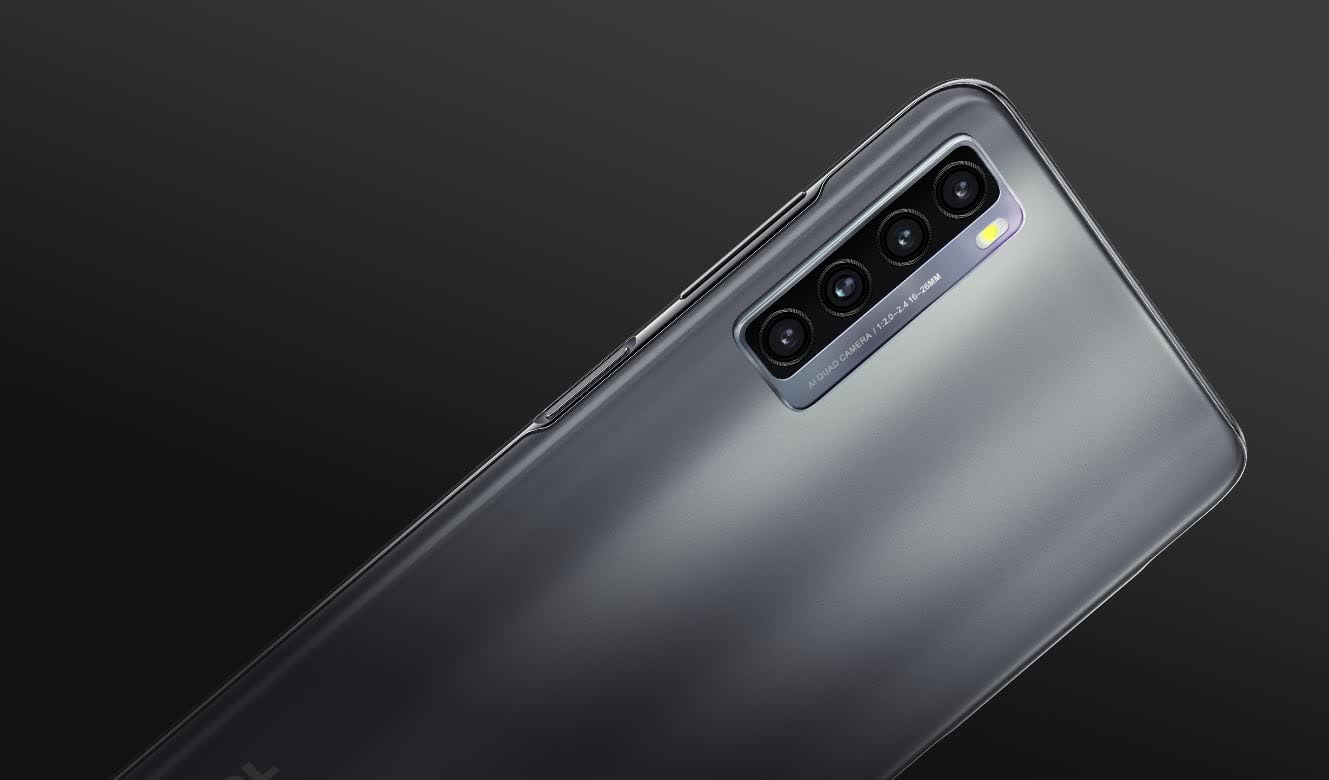
However, there are a couple of things to note before deciding on the TCL 20S as your next budget phone. The first is lack of 5G, which can be found on our other two budget recommendations. Right now, 5G is more of a bonus feature and less of a necessity for buyers in this category, but it's still worth mentioning.
What this TCL could have benefited more from, is a higher refresh rate display, like the 90Hz panel that's present on both of our two other budget picks. The third is TCL's software support, which is limited to just one major Android upgrade (to version 12) and two years of security updates.
Lastly, there's no official IP dust and water protection, but that's a rare quality to find on budget phones anyway. Look past these minor issues, and the TCL 20S comes out to be a solid purchase that's light on the wallet.
Another solid all-rounder:
OnePlus Nord N200 5G
Considering how OnePlus is aggressively targeting the value phone market, it's not surprising to see another Nord model pop up in our recommendations. For $200, the Nord N200 5G certainly looks more expensive than it is, packing several convincing features that make it a compelling budget option.
For starters, it has a fast and sharp 90Hz 1080p IPS LCD coming in at 6.49-inches, a modern-looking punch-hole display, and a large 5,000mAh battery with 18W charging to keep it going for hours on end. The Snapdragon 480 5G chip is paired with the usual 4GB/64GB of memory and microSD expandable storage combination. It offers 5G connectivity, albeit limited to T-Mobile and Google's Fi network in the US.
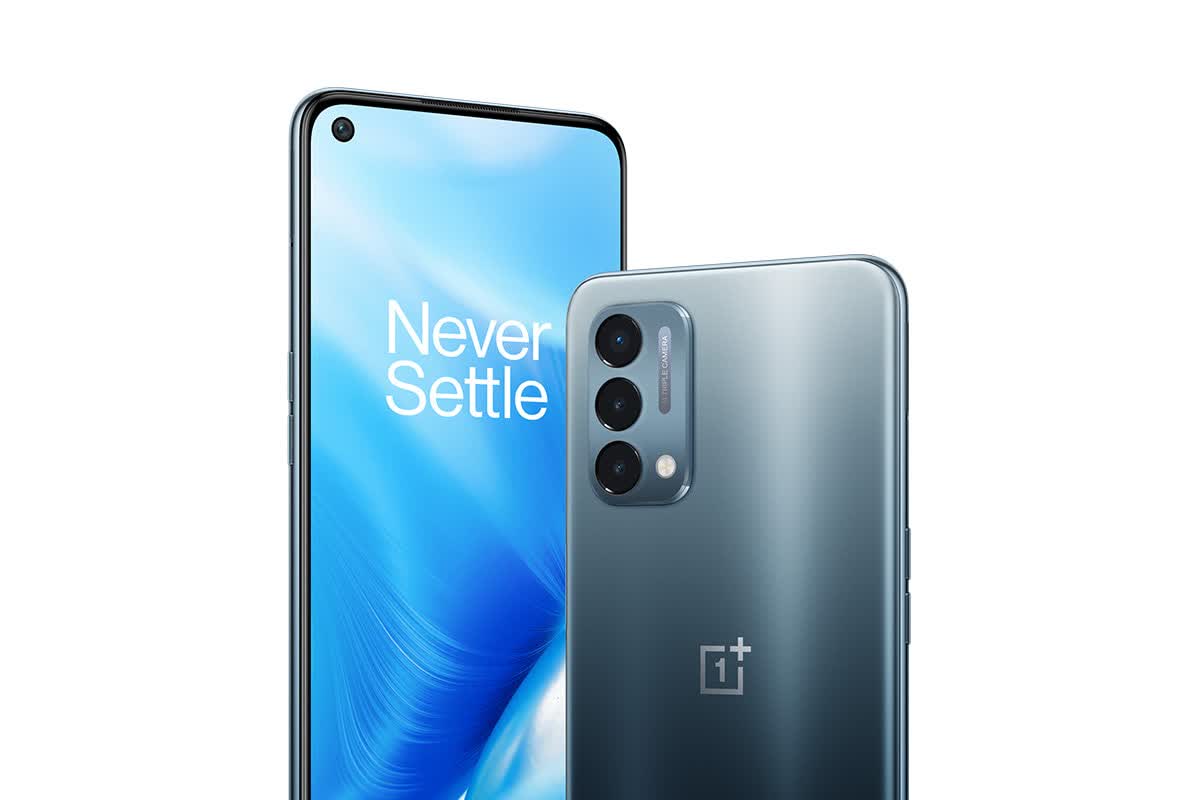
While those features make the N200 5G a tempting buy at this price point, its triple-camera array offers a subpar experience and the phone's Oxygen OS 11 software has been noted to suffer from the occasional performance lag.
OnePlus also has a rather odd software policy for this model, as it will offer just one major Android update (to version 12) and three years of security updates. The latter seems more useful, considering a major feature update will likely end up worsening the phone's overall performance. Like the value-based Nord CE 5G, the N200 lacks any official IP rating or an alert slider, but at least its elegant design more than lives up to the price, and it packs useful connectivity features, including a 3.5mm jack, NFC and a side-mounted fingerprint scanner.
An affordable Galaxy phone:
Samsung Galaxy A32 5G
The Galaxy A32 5G is another top contender for budget buyers, especially those looking for fast connection speeds (sub6 and mmWave), Samsung's usual Android customizations and features, and a rather solid software upgrade and security support policy. You'll get up to Android 13 on this phone (ships with Android 11) and four years of regular security updates, support that's rare to find at this price point.
The 6.5-inch tear-drop screen uses a low-res 720p TFT panel, but refreshes at 90Hz for a smoother experience. Inside is MediaTek's Dimensity 720 5G chip paired with 4GB memory and 64GB of microSD expandable storage. There's also a versatile quad-camera system with a 48MP wide main unit as well as ultrawide, macro and depth sensors that are hard to find at this price.

Like the TCL and OnePlus phones, the Galaxy A32 is powered by a 5,000mAh battery for multi-day use and supports 15W fast charging. It also unlocks via a side-mounted fingerprint scanner and covers the connectivity aspect fairly well with a 3.5mm jack and NFC support on top of Wi-Fi/Bluetooth and wired USB-C 2.0.
The budget A-series model is set to receive Samsung's One UI 4 (Android 12) update in May 2022, so potential buyers will have to wait a bit for the design and feature enhancements that release has to offer. Like its budget rivals, there's no IP rating for dust/water protection, so you'll need to keep it in a secure case and exercise caution with its glass front and plastic back. However, as an overall package, it offers a solid budget experience for $280.
Best of the Best
Apple iPhone 13 Pro Max

Apple delivers the goods as usual with its top-of-the-line iPhone 13 Pro and 13 Pro Max delivering improved battery life, superb cameras, and even a 1TB storage option, and finally adding a 120Hz high-refresh rate OLED screen. Both the 13 Pro and 13 Pro Max are fully-featured iPhones, but it's up to you to decide if you prefer the slightly more affordable, pocket-friendly model over the larger, longer-lasting variant. We recommended the latter, as the 13 Pro Max packs the best and most of what Apple currently has to offer in an iPhone.
The 13 Pro Max features a 6.7-inch Super Retina XDR OLED that renders iOS 15 at a smooth, variable 120Hz refresh rate. While Apple's A15 Bionic continues to extend its performance lead over rivals. While Apple's brilliant triple-camera system is a minor upgrade over the 12 Pro Max in terms of photography, Apple's addition of ProRes and Cinematic modes will have users recording more videos, making capacious storage models all the more necessary.
Although battery life was not a major concern with the 12 Pro Max, a larger 4,352mAh unit on this model vs. 3,687mAh on the older model is certainly a welcome upgrade that offers much longer run times.
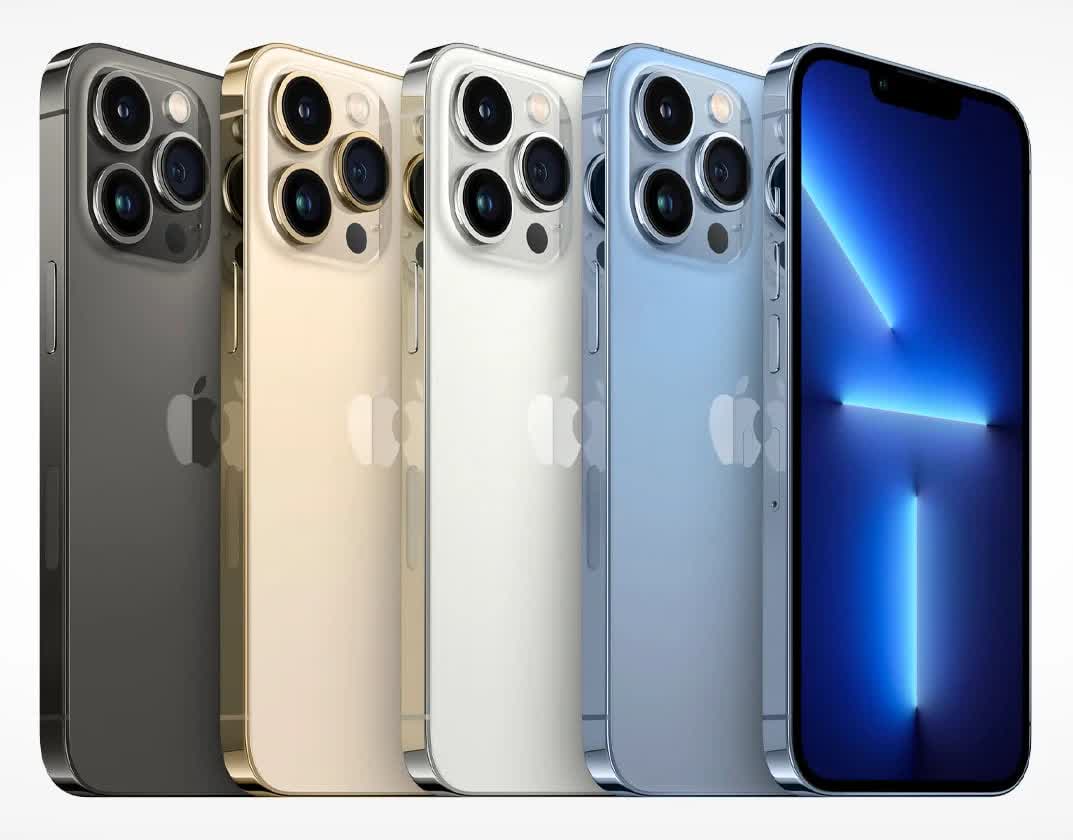
The iPhone 13 Pro Max commands a hefty price, too, starting at $1,099 for the 128GB model. The only minor weakness is that notched display and the fact that you'll still be fumbling with lightning to USB-C cables if a wired connection is required, but that's something Apple might ditch in favor of USB-C in the future.
For now, the iPhone 13 Pro Max is the ultimate device to experience the best of iOS and Apple's walled ecosystem.
The ultimate Android phone:
Samsung Galaxy S21 Ultra
Samsung has a lot of competition in the budget and mid-tier phone category, while mainstream Android flagships like the OnePlus 9, Pixel 6 and Xiaomi's Mi 11 keep the S21 in check. However, the latter's bigger, 'Ultra' variant is still the way to go for experiencing top-end hardware with feature-rich software.
The Galaxy S21 Ultra is massive in all senses of the word. It's pricey, powerful, and comes with a huge 6.8-inch QHD+ 120Hz AMOLED display that's also the best place to use Samsung's S Pen stylus outside of the company's Z-series foldables. To keep up with all its multitasking and productivity capabilities, Samsung has paired Snapdragon's 888 5G SoC with 12GB/128GB of memory and storage on the base model, and also offers a 16GB/512GB variant for truly demanding users.

The S21 Ultra's penta camera system on the rear features a 108MP main sensor and 100X zoom capability. Ever wished for a 40MP selfie camera? This phone comes with one. All that hardware is powered by a 5,000mAh battery, which is probably the only spec the S21 Ultra has in common with other phones on this list.
It's got pretty much everything covered in terms of connectivity and features, save for microSD expansion and a 3.5mm jack. It's also a pretty sizeable phone, but deep-pocketed buyers interested in such a device know what they're getting into.
Rivals like the Xiaomi Mi 11 Ultra, OnePlus 9 Pro, and Google's Pixel 6 Pro are worthy Android alternatives, but Samsung's well-established flagship is the more complete package overall.
Best Foldable
Samsung Galaxy Z Flip 3

Foldables might not be as mainstream as candy bar phones, but Samsung has arguably done the most in giving this niche form factor a firm push into the market after years of trying. The effort seems to have paid off, given that Samsung's Z Fold 3 and Z Flip 3 were actually outselling the Galaxy S21 and Note 20 flagships a few months ago.
Although this category is far less saturated and has plenty of room for innovation, it's still quite difficult to produce a well-executed foldable (just ask Microsoft and Motorola). The Galaxy Z Fold 3 and the Z Flip 3 are currently the only two viable options, provided you're willing to pay for the privilege.
Of these two, the Galaxy Z Flip 3 is arguably the more usable, pocket-friendly option that also isn't prohibitively expensive. The vertical clamshell design takes full advantage of the folding mechanism to reduce the Flip 3's size in half to offer a 1.9-inch secondary display for info/notifications, and behaves just like any normal phone when unfolded.
It also doesn't skimp on specs, either. The Z Flip 3's main display is a 6.7-inch 120Hz 1080p AMOLED, powered by Snapdragon's flagship 888 5G SoC and Android 11. Paired with 8GB/128GB of memory and storage on the base model and a capable dual-camera system, the Z Flip 3's only minor weakness is middling battery life.
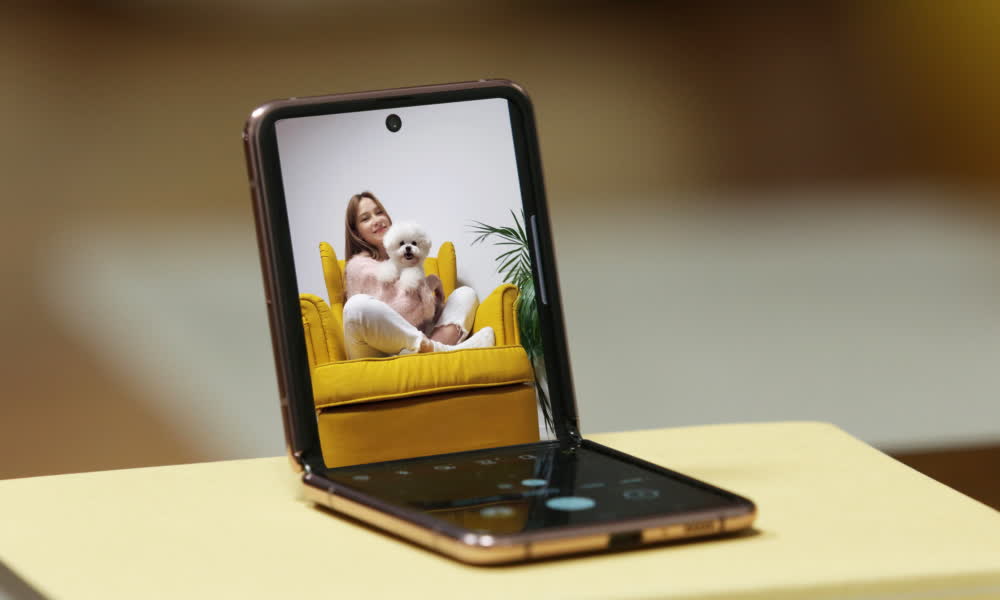
The novel form factor means that Samsung could only fit a 3,300mAh unit inside the Z Flip 3, so you'll definitely need a plug or wireless charging source after a day of moderate use. And while the design is officially water-resistant (IPX8), the lack of dust protection could be worrying down the road.
Samsung has been improving its foldable designs for some time and will likely address the Z Flip 3's shortcomings in future iterations. For now, it's not only Samsung's best foldable to date, but also the most convincing in this category, showing it may be ready to go mainstream.
For deeper pockets:
Galaxy Z Fold 3
The higher-end Galaxy Z Fold 3 approaches the foldable form factor in a different, more flamboyant way. Instead of folding into a tiny device, the Z Fold 3 is all about spectacle and offering lots of screen real estate for content consumption, multitasking and productivity.
It also makes the strongest case for the S Pen, despite the phone annoyingly lacking a storage compartment for it. Dual 120Hz AMOLED displays power the show on the main 7.6-inch screen, alongside an external 6.2-inch 120Hz tall and narrow cover display. The main panel still suffers from a crease in the middle, but there's now an under-display selfie camera to make the experience more immersive.

Samsung's Multi-Active Window feature takes advantage of the dual screens by opening two apps on each side, allowing the user to drag and drop content between them. There's also the ability to arrange apps in pairs to quickly open them simultaneously.
Open the Z Fold 3 partially and Samsung's Flex mode can come into play. Supported apps like YouTube and Camera then display their main content on one screen, while controls and navigation appear on the bottom. The experimental feature, available on both the Z Flip 3 and Z Fold 3, needs to manually enabled by going into Settings > Advanced Features > Labs.
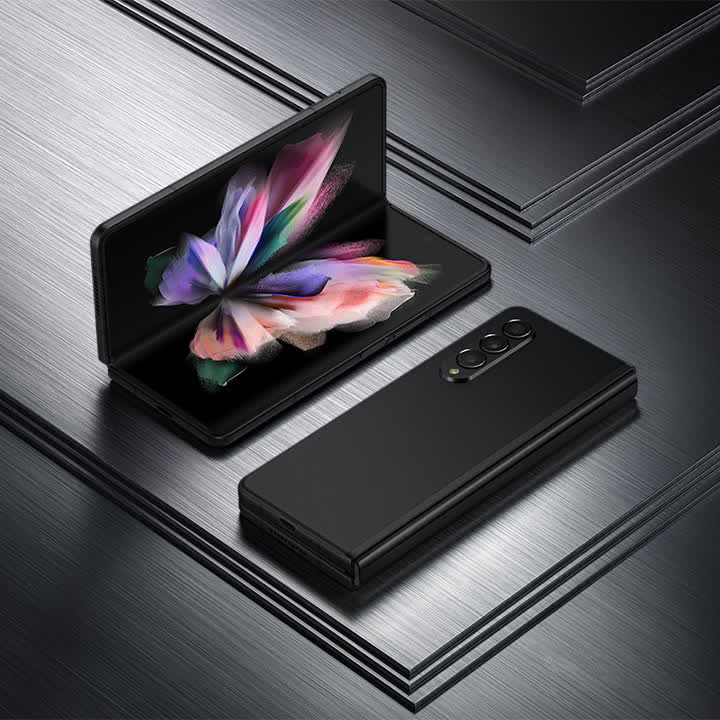
Like the Z Flip 3, the Z Fold 3 uses 2021 flagship hardware inside, but is also available in 12GB/512GB flavor. Its design is also IPX8 rated for water resistance, but an overall bigger profile allows for a larger 4,400mAh battery. With all the hardware it's powering, don't expect stellar multi-day battery life out of the Z Fold 3, as moderate use will have you charging it at the end of the day.
One major concern with foldables has been durability, which Samsung claims to have continuously improved with each iteration of the Z Fold. To that end, Gorilla Glass Victus and a new protective PET film have been applied on the Z Fold 3. The latter results in a reflective display, but one that's likely to sustain daily use and abuse for longer.
The Z Fold 3 is a cutting-edge foldable and therefore demands a lot of money. $1,500 is excessive for any phone, but the novelty factor just might be worth the price of admission.

